Are There Dental Crowns for Kids?
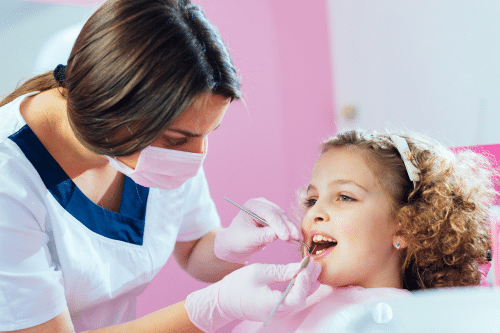

Dental crowns are a useful dental tool to replace damaged teeth. Most dental crowns replace the chewing surface of a molar. They act as a way to repair damaged, pitted dental surfaces. Dental crowns are an important part of pediatric dentistry. They work to repair teeth of all sizes, including non-permanent teeth, in the case of severe dental damage or developmental issues with the teeth. Here, we cover the different types of dental crowns for kids and how they can help repair dental damage.
What Are Dental Crowns?
Dental crowns are a form of dental repair that involves placing a material cap (the crown) on top of a tooth. There are several ways this can work and different levels of preparation for each type of crown. Dental crowns can be made out of metal or composite resin. There are also strip crowns, which involve placing a crown with a plastic shell and strip on top. Then, removing the strip and plastic shell once the crown attaches firmly.
For some dental crowns, no preparation is needed. This is primarily the case for crowns repairing dental development issues, as the purpose is to build up the enamel surface. Other crowns, especially those replacing severe dental decay, may require material removal before application to provide a better fit. Sometimes, temporary crowns protect the tooth while a more detailed crown is made.
Dental Crowns for Kids
Dental crowns can replace broken or damaged chewing surfaces. They act as a way to preserve severely damaged teeth in pediatric patients. If your child has severe dental decay, especially with a root canal on a permanent tooth, a dental crown can restore the tooth’s chewing surface and help avoid an extraction.
Dental crowns for kids are almost the same as those for adults. While the tooth size may vary, especially for baby teeth, the same process applies to all teeth. These crowns allow children to keep their original teeth. This is important for adult teeth to grow straight later in life and help preserve any adult teeth impacted by decay.
Since dental crowns can match the natural color of your child’s teeth, dental crowns are a nearly unnoticeable way for your pediatric dentist to make structural repairs to your child’s teeth. While dental crowns may need to be replaced later in life, they have a long use time, meaning that a dental crown will help maintain and preserve your child’s dental health for years.
Dental crowns can replace damaged or worn-down chewing surfaces if your child suffers from bruxism (teeth grinding). This is usually done as a final treatment stage for bruxism, as mouth guards and splints are the first line of defense to protect your child’s teeth. Still, dental implants are a great option if your child has a damaged chewing surface that needs repair.
If you have questions about pediatric dental crowns or want to make an appointment, contact Smile First Pediatric Dentistry at (631) 563-7462. Our team of family-friendly pediatric dentists would be happy to answer any questions you may have and help schedule an appointment. We look forward to seeing you soon.
Source(s):
What Are the Signs of Poor Oral Health in Children?


If you’re worried about your child’s dental health, there are some clear signs of poor oral health to watch out for. From dental pain and bad breath to sore, swollen, or bleeding gums, dental symptoms can be more than just annoying. Here, we cover some signs of poor oral health and ways to make taking care of teeth fun and engaging for children.
Signs of Poor Oral Health in Children
Some signs of poor oral health in children can include tartar buildup around the teeth and gums, a sore, receding, or swollen gum line, bad breath, and of course, dental pain. While cavities are a sign of poor oral health, it can be hard to notice cavities without dental training unless they’re causing obvious pain or have progressed to the stage where they are quite large.
If your child has loose adult teeth or complains of persistent dental pain, this can also be a sign of poor oral health and indicate you should visit a dentist as soon as possible. As with most dental concerns, early detection can greatly reduce complications, meaning getting your child’s dental care back on track is crucial to their long-term oral health.
Ways to Improve Oral Health in Children
One of the ways to improve your child’s oral health is by teaching them to brush their teeth for two minutes twice daily. Teaching your child to floss properly can also help preserve oral health and prevent cavities. If your child has difficulty flossing or finds it boring or annoying, try getting replaceable floss picks. These picks make flossing fun and come in fun shapes like dinosaurs or other animals to encourage your child to floss their teeth. You should also invest in an alcohol-free mouthwash.
Another way to improve your child’s oral health is to ensure they visit the dentist at least twice a year for routine dental hygiene appointments. Regular dental cleanings can help preserve oral health in children and allow your dental team to notice problems before they become serious and treat any dental concerns early on.
Your dentist can help teach your child the proper way to brush their teeth and the importance of oral hygiene. If you struggle to get your child to clean their teeth, your dental team may have suggestions on how to incentivize good oral health. Offering rewards like stickers, sugar-free candy, or fun outings can all be ways to encourage your child to brush their teeth twice a day.
Building good oral health habits in children doesn’t have to be a struggle. By prioritizing your child’s dental health and working to impart the importance of good dental hygiene, you can set your child up for a lifetime of success. If you’re looking for a pediatric dentist, check out Smile First Pediatric Dentistry or call us at (631) 563-7462 to schedule an appointment. We work closely with children and their caregivers to start good dental health habits that benefit kids for their entire lives.
We look forward to seeing you soon.
Source(s):
https://www.cdc.gov/oralhealth/basics/childrens-oral-health/index.html
When to Visit a Kids’ Emergency Dentist


No one wants to think about worst-case scenarios, especially regarding your kids. Thankfully, emergency pediatric dentists are there to help in case of an emergency. We discuss some of the more common pediatric dental emergencies and what to do before you visit your kids’ emergency dentist. Remember: dial 9-1-1 and visit your local emergency room for medical non-dental emergencies. If you have an emergency that could be considered medical and dental, see a doctor or call 9-1-1 immediately. So, without further ado, let’s jump into the topic.
Examples of Dental Emergencies
Children are danger-prone. It comes as part of learning about the world around them and having a lot of energy. Some of the most common dental emergencies come from exploration and “goofing off,” like knocking out permanent teeth. If your child knocks out an adult tooth, have them put it in milk or an ADA-approved tooth preserver to save it while you go to the emergency dentist.
Similarly to a knocked-out tooth, a chipped or cracked tooth is also a reason to visit a pediatric emergency dentist. Preserve the chipped-off portion of a tooth the same way you would a lost adult tooth, and be sure to visit a kids’ emergency dentist as soon as possible. You can use a cold compress like ice or frozen peas (wrapped in fabric to keep from getting too cold) to keep down swelling. Tell your emergency dentist if you give your child any over-the-counter pain medication when you arrive.
Other kids’ dental emergencies include a lost filling or broken braces bracket digging into part of their mouth. If your child dislodges or breaks part of their orthodontics, it’s important to fix this as soon as possible. Use dental floss to try and remove the object if your child gets something stuck in their teeth. However, be sure to never use anything sharp or pointed. If the object remains, it’s time to visit the dentist.
Of course, suppose your child shows signs of dental infection, including swelling, pain, a bad taste in the mouth, pus, or other symptoms. In that case, it’s important to visit an emergency dentist immediately, as this can lead to more severe dental problems and cause discomfort for your child.
How to Prevent Kids’ Dental Injury
Ensure your child understands that they should only use their teeth to eat. Teach them not to chew hard objects like ice, popcorn kernels, candy, or anything not food, as this can lead to dental damage. Ensure your child has a dentist-approved mouthguard for sports, skateboarding, roller skating, and more, as this can protect them from serious dental damage. If you’re unsure if something is a dental emergency, call your pediatric dental office as soon as possible, as they can advise you on the best course of action.
If you’re looking for a pediatric dentist, check out Smile First Pediatric Dentistry. Our team of experienced pediatric dentists works diligently to maintain your child’s dental health. If you’re interested in making an appointment or have questions, call us today at (631) 563-7462.
Source(s):
https://www.mouthhealthy.org/all-topics-a-z/dental-emergencies
Why are Dental Sealants Important for Kids?

Dental sealants are an important tool in preventing cavities and maintaining good oral health in children. As a parent, you want to do everything you can to ensure your child’s teeth stay healthy and strong, and dental sealants can help you achieve that goal.
What are dental sealants?
Dental sealants are thin, plastic coatings that are applied to the surfaces of the teeth. They are typically placed on the chewing surfaces of the back teeth (molars and premolars), where cavities are most likely to develop. The sealant material is painted onto the tooth surface and then hardened with a special light. The sealant acts as a barrier, protecting the tooth enamel from plaque and bacteria that can cause decay.
Why are dental sealants important?
Children’s teeth are vulnerable to decay, particularly in the pits and fissures of the back teeth. Even with good oral hygiene practices, it can be difficult to clean these areas thoroughly, which makes them more susceptible to decay. Dental sealants help to fill in the pits and fissures, creating a smooth surface that is easier to clean and less likely to trap food and bacteria.
In addition to being an effective preventative measure, dental sealants are also a cost-effective way to protect your child’s teeth. According to the Centers for Disease Control and Prevention, dental sealants can reduce the risk of decay by up to 80% in the first two years of application, and up to 50% for up to four years. By preventing cavities, dental sealants can save you money on costly dental treatments like fillings and crowns.
When should dental sealants be applied?
Dental sealants are typically applied as soon as a child’s permanent molars and premolars erupt, usually around the ages of 6 and 12. The sooner the sealants are applied, the better, as it is easier to apply them to teeth that are free from decay. However, sealants can also be applied to teeth that have early signs of decay, as long as the decay has not progressed too far.
How are dental sealants applied?
The process of applying dental sealants is quick and painless. First, the teeth are cleaned and dried, and an acid solution is applied to the surfaces of the teeth to help the sealant material bond to the tooth enamel. The sealant material is then painted onto the tooth surface and hardened with a special light. The entire process usually takes less than 30 minutes per tooth.
Are dental sealants safe?
Yes, dental sealants are safe and have been used for decades to prevent cavities in children. The sealant material is BPA-free and does not pose any health risks when applied as directed. However, if your child has an allergy to any of the components of the sealant material, we may recommend an alternative preventative measure.
In conclusion, dental sealants are an effective and safe way to prevent cavities and maintain good oral health in children. By applying dental sealants to your child’s back teeth as soon as they erupt, you can help protect their teeth from decay and save money on costly dental treatments. If you have any questions about dental sealants or other preventative measures, don’t hesitate to call us at 631-563-7462 or email us at team@smilefirstkids.com.
How Much Does It Cost to Fix a Child’s Chipped Tooth?
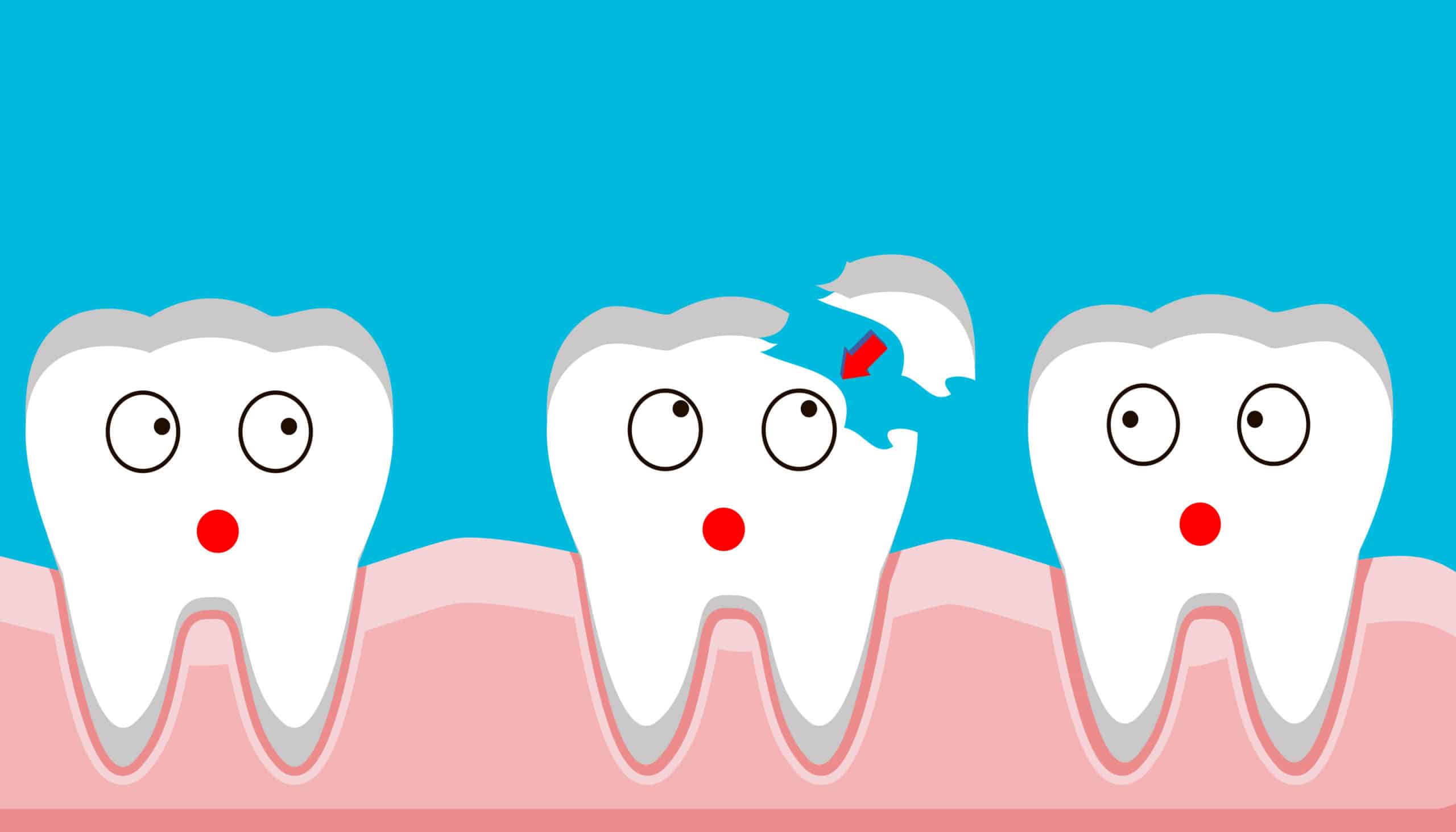
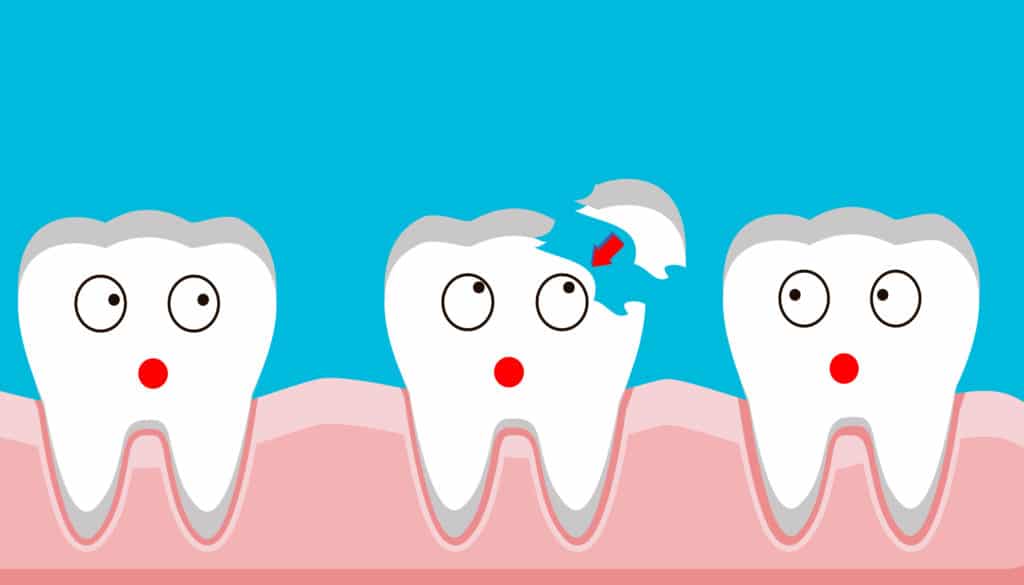
A chipped tooth is undoubtedly a reason to call your pediatric dentist. However, as concerning as a chipped tooth is, it is a relatively common dental problem for children. Whether your child took a tumble into a table or decided it would be fun to bite something they shouldn’t, a chipped tooth is almost as common as a cavity. Here, we cover the common causes of chipped teeth, how your pediatric dentist can fix a chipped tooth, and why your dentist may recommend leaving the tooth as it is.
Common Causes of Pediatric Chipped Teeth
Some common causes of chipped or cracked teeth include biting down on solid objects or tough foods. They can also be a result of facial trauma like bumping into furniture or taking a tumble off a playset. Dental chips and cracks can span in severity and appearance. They can be as visible as breaking a chunk off your front teeth to as minor as a small crack in your molar. However, any tooth chipping or cracking is cause for concern and a dental visit, no matter how old the patient.
If your child chips a tooth, try to find it and make sure they avoid swallowing the tooth portion. Wrap the tooth part in wet gauze to help preserve it until you can visit your dentist. Next, have your child rinse their mouth with warm salt water to prevent infection and to clean out any bleeding or swelling. Finally, you can use a cold compress on your child’s face to help keep down the swelling and to help with the pain. Be sure to schedule an appointment with your dentist as soon as possible, and check if your pediatric dentist schedules emergency dental appointments.
Methods of Fixing Chipped Teeth
Pediatric dentists can repair chipped teeth in a variety of ways. Sometimes, your pediatric dentist may use the same materials used in filings to repair the chip or crack after cleaning the area. In addition, they may use a dental bonding agent to reattach the chipped portion of the tooth, or they may recommend a dental veneer to maintain the appearance of your child’s teeth. In general, fillings cost between $100 to $300, depending on the dentist, your insurance, and the severity of the damage. Your pediatric dentist may recommend extraction for more severe tooth breakages, especially if the tooth is shattered entirely. However, these kinds of tooth breakages are rare.
Sometimes, your dentist may recommend not doing anything about a chipped tooth. For example, if the chip is small, surface level, or does not structurally impact the tooth, your pediatric dentist may advise you to leave it as it is. This is usually the case for pediatric patients who haven’t lost their baby teeth, as repairing a slight chip in a tooth that will fall out shortly may not be necessary. However, you should always take your child to see a dentist if they chip a tooth to ensure no hairline chips you cannot see, which could lead to infection later.
If you’re looking for a pediatric dentist, check out Smile First Pediatric Dentistry to make an appointment or call us at (631) 563-7462 to find out more.
Source(s):
Pediatric Dentist vs. Family Dentist


As a parent, finding a dentist for your child can be exhausting. Trying to figure out if a dental office is a good fit for your family may sometimes seem overwhelming. Thankfully, we’re here to help.
Let’s look at the differences between pediatric and family dentists and what you can expect from each practice. While there is some overlap between training and atmosphere, in some cases, pediatric dentists are a better choice for your family, depending on your child’s needs.
Their Training
While family dentists and pediatric dentists welcome younger patients, only pediatric dentists specialize in pediatric dental care. Family dentists serve a wide range of dental patients, while pediatric dentists specialize in treating and caring for young children.
Sometimes, a family dentist can provide exemplary dental care for your child. However, if your child is anxious or has other special needs, a pediatric dentist may be a better fit for you, as they are specially trained in children’s dentistry.
Pediatric dentists undergo a full six years of dental training, four years as standard dental training, and another two years specifically training in pediatric dentistry. This specialization shows in their practice, allowing them the experience needed to care for your child’s dental needs.
Child-Friendly Care
While family dental care targets being accessible for the whole family, pediatric dentistry specially tailors to younger patients. This means that every aspect of their dental practice is geared toward children.
From longer dental appointments and specialized scheduling to patient practitioners who take the time to make you and your child comfortable, a pediatric dental office offers child-friendly care in every aspect of their practice.
If your child suffers from dental anxiety or has special needs, including ASD, Down Syndrome, cleft palate, or other considerations, a pediatric dentist may be a good fit. Some general dentists won’t see younger patients. However, pediatric dentists work with parents to introduce children to dentistry at an early age and foster lifelong dental habits.
Child-Friendly Atmosphere and Equipment
Pediatric dentistry prioritizes patient comfort above all else, meaning their office is specially designed to comfort and support younger patients. From early appointment times to longer time slots for fussy patients, pediatric dentistry considers your child’s needs when planning every aspect of their practice.
Not only is a pediatric dental office made to be fun and inviting to young children, but it also specializes in pediatric dental equipment. By ensuring everything in their practice supports young patients, pediatric dentists can provide comprehensive, comfortable care to young patients of all ability levels and dental needs. So if your child is anxious about their first dental visit, or you’re looking for a specialist that prioritizes your child’s needs, pediatric dentistry is a good fit for you.
If you’re looking for a pediatric dentist, check out Smile First Pediatric Dentistry. Our office works diligently to create a positive, child-friendly environment for parents and children. We work to take the stress out of visiting the dentist and hope to instill healthy dental habits from a young age that will last a lifetime. To schedule an appointment, call us at (631) 563-7462.
Are Dental X-Rays Harmful to My Child?

X-rays are a powerful diagnostic tool for both dentists and medical professionals alike. However, some parents have hesitations about their child being exposed to x-rays. This article discusses how dental x-rays are safe for you and your child. Our staff works diligently to protect your child while providing professional, comprehensive pediatric dental care.
Are Dental X-Rays Necessary?
In short, yes, dental x-rays are a necessary diagnostic tool for pediatric dentists, as well as other dental practitioners. Dental x-rays allow your dental team to notice potential health issues early on. This allows us to treat any problems at the source. For example, dental x-rays can alert your dentist to jaw issues, tooth crowding, dental impaction, and rarer dental issues like mouth cancers.
Without dental x-rays, much of dentistry would become reactionary. This means your dental team could not head off dental issues before they become severe. Instead, dental x-rays give professionals a heads-up about potential dental problems before they become serious. For pediatric patients, dental x-rays can alert dentists to how adult teeth will grow in and allow them to head off any impaction or dental crowding before it becomes severe.
Will X-Rays Hurt My Child?
Dental x-rays involve such a small amount of radiation that it is a negligible source of radiation exposure. On top of this, our team uses the ALARA (as low as reasonably achievable) practice for dental x-rays. This means we use the lowest, most targeted x-ray system available to lower your overall exposure.
We also use all forms of protective gear necessary to protect your child’s thyroids and other sensitive organs from potential x-ray exposure, using protective vests and collars to reduce overall exposure.
X-Ray Technology Advancements
X-ray technology has come a long way since its discovery. Modern x-ray machines are smaller, hand-held, and use targeted systems to reduce overall radiation exposure. In most cases, we use hand-held x-ray machines that can directly pinpoint one area of your mouth while reducing exposure to stray radiation. If a full x-ray is needed, we use specialized x-ray technology to quickly process the image without exposing your child to further radiation.
Visiting the dentist is crucial to your child’s dental health. Routine dental x-rays benefit the dental diagnosis and dental health treatment. Using specialized, top-of-the-line x-ray technology to get the most precise imaging possible, we reduce the overall risk of exposure and ensure your child receives the best dental care possible.
Here at Smile First Pediatric Dentistry, we know caring for your child’s health is a full-time job. So we work closely with parents to provide a safe, nurturing environment that benefits our patients and their families. Caring for your child’s dental health shouldn’t be a source of added stress, which is why our professional team of accredited dental care specialists works diligently to provide the safest, top-of-the-line care options for children of all ages. To find out more about our practice, or to make an appointment, call us today at (631) 563-7462.
Explaining Signs of Tooth Infection and Decay


If your child complains about tooth pain, it’s time to get them to a dentist. However, how can you notice the early signs of tooth infection and decay before the damage is done? Thankfully, the American Dental Association provides plenty of kids’ dentist-approved advice on how to notice signs of tooth infection and tooth decay in kids.
Symptoms of Kids’ Tooth Infection and Tooth Decay
Did you know one in five children suffer from tooth decay by the time they’re in kindergarten? Knowing the signs of tooth infection and tooth decay early can help you prevent it and get swift treatment to stave off dental damage.
First, keep an eye out for red, swollen gums. This can be a sign of early tooth decay or disease and gingivitis. Your child should be using a soft, child-safe toothbrush. If you see any signs of gum damage or bleeding, or persistent redness, it’s time to visit your pediatric dentist.
Another sign of tooth infection and decay is pain when eating or swallowing. If your child complains that it hurts to eat food or shows signs of pain while swallowing, it may be time for a dental check-up.
Keep an eye out for dark spots, chips, or cracks on your children’s teeth, as this can be a clear indicator of decay and are a reason to head to the dentist as soon as possible. While many people think that because “baby teeth” fall out, they don’t need to worry about cavities, cavities, and tooth infections that can lead to complications down the road. The healthier your child’s teeth, the better set up their adult teeth are when they do grow in.
Treatment Options for Kids’ Tooth Infection and Decay
Thankfully, many treatment options for tooth decay and infection are simple, easy, and the same as those used for adults. First, your pediatric dentist will evaluate the extent of dental decay and decide on how much of the underlying enamel needs to be removed. The tooth will then be restored using a filling or dental crown. These can be made from metal or composite enamel and help restore your child’s teeth structure.
During the dental filling process, the dentist will numb your child’s mouth with localized anesthetic, and your dentist may give them laughing gas to help them relax during the procedure. Once the decayed tooth portions are removed and cleaned, your dentist will place the fillings or dental crown and seal the area to prevent further decay. Thankfully, a dental crown or filling will not cause problems if your child still has their baby teeth, as they will still fall out like normal when the time comes.
In case of an infection, the tooth may need to be extracted and the area treated with medications to help fight the infection. Thankfully, fighting infections is easier if they are caught early, so make sure to take your child to the dentist for regular check-ups and if you have any concerns about their dental health.
If you have questions or concerns about kids’ tooth infections and decay or want to make an appointment with a family-friendly, welcoming pediatric dentist, call us at 631-563-7462. At Smile First Pediatric Dentistry, your child’s dental health is our top priority. Visit us today!
When Should I Start Bringing My Child in for Their Teeth Cleaning?
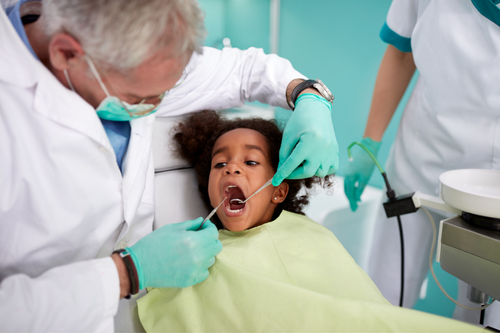
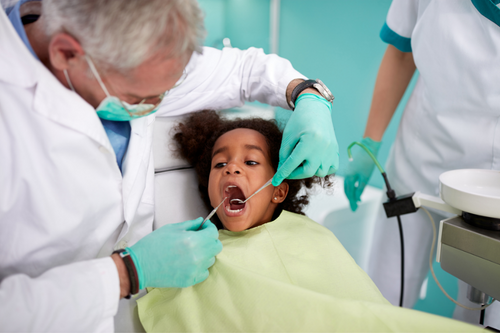
The concept of dental care can be daunting to some parents. It can be hard to know when to take your child to the dentist and how often they should be brought in for their teeth cleaning. In addition, many parents wonder if their child’s baby teeth matter that much, as they will fall out. In this article, we go over the best age for your child’s first dental appointment. We will also discuss ways to ensure your child grows up with a happy, healthy smile.
What Age Should a Child Be Before Going to the Dentist?
Dentists recommends your child visit the dentist as soon as their first tooth comes in, around six months old. Regardless of when their teeth start, you’ll want your child to have their first dental visit before they turn one year old. This allows your dentist to catch any dental issues that may appear, and also acclimates your child to the dentist.
The more often your child visits the dentist, the more relaxed they tend to be about routine dental visits. This allows parents or guardians to get used to going to the dentist with the child. It also enables them to brush up on the best dental practices for their child.
How Often Should I Take My Child to the Dentist?
You should take your child in for their first teeth cleaning before age one. After that, routine dental cleaning and checkups should happen every six months. However, for some people, visiting the dentist should happen more often. This is especially true if there is a family history of tooth decay or other dental problems. Working with your dental team is the best way to find the right time to bring your child to the dentist. Of course, if your child is complaining about dental pain or you notice any concerning changes, contact your dentist immediately.
How to Prevent Cavities in Children
One of the best ways to prevent cavities in children is to practice good dental hygiene at a young age. This includes regular brushing and flossing of your child’s teeth, and also involves teaching them about healthy dental habits. So while you may be tempted to take over for your child regarding dental hygiene, teaching them how to brush their teeth is a big step toward healthy teeth.
Another way to prevent cavities in children is to limit their consumption of sugary beverages and juices and make sure not to allow them to fall asleep with their bottle in their mouth, as this can lead to baby bottle tooth decay. In addition, making sure to brush your child’s teeth as soon as they start to grow in and making sure they have adequate access to fluoride can all prevent cavities.
If you’re looking for a pediatric dentist, check out Smile first Pediatric Dentistry. Our office is in Oakdale, NY, and we are proud to offer exceptional pediatric dental care to the surrounding areas. If you’re looking to schedule your child’s first dental visit, or want to learn more about pediatric dental care, call our office at (631) 563-7462.
Does a Tooth Extraction Hurt for Kids?
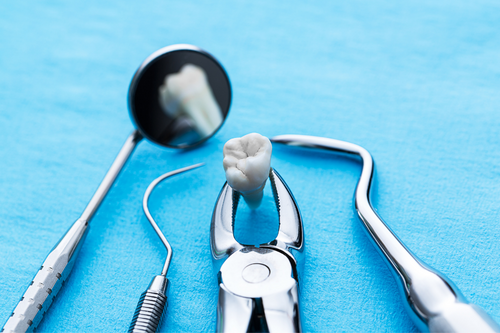

Many people are nervous when they first go to the dentist; the same goes for kids. Dental visits can be scary for kids, especially with all the noises and equipment. Unfortunately, when it comes to getting a tooth extraction, it’s normal for you to be nervous. The same goes for your kids. Thankfully, getting a tooth extraction is an easy, painless process. Your dental team will work to make the tooth extraction as smooth as possible for you and your child and ensure the best dental care possible.
Is a Tooth Extraction Painful?
For people with infected teeth, tooth extraction can help reduce their pain significantly. The procedure is painless thanks to numbing agents like Novocain and mild sedatives like nitrous oxide (also called laughing gas). If your child is nervous, oral sedation may be used to help relax your child. This also makes things easier for the dental team.
While your child will be sore after tooth extraction, they are unlikely to feel any pain during the procedure. Over-the-counter pain medications can help relieve the soreness. Be sure to follow all care instructions from your dental team after you leave the office to ensure the extraction site heals well.
What if My Child is Nervous About Tooth Extraction?

Your dental team will work with you and your child to explain everything they should expect at their appointment, including all the tools they’re using and why they need to remove their tooth. If your child is overly nervous, an oral sedative may be used to help them relax and to make the entire process quicker. Explaining that the dental team is there to help your child and that they won’t feel any pain when the tooth is removed can help calm them. You can also allow your child to bring a comfortable stuffed animal or another object to help make their dental visit easier.
What to Expect from a Child Tooth Extraction
Your dental team will explain what to expect from an extraction visit, especially if multiple teeth need to be removed. In most cases, your dental team will examine the mouth and prepare your child for having their tooth extracted. Any sedatives or numbing agents will be applied first, followed by the removal of the tooth.
After the tooth removal, follow the dentist’s instructions to avoid infection and ensure the extraction site heals well. Your dentist will have specific food restrictions for your child to follow for their comfort and health, so be sure to pay attention and ask clarifying questions. Of course, if you have any other questions, you can always call your dental team to find out more.
While going to the dentist can be anxiety-inducing for children, it doesn’t have to be. Here at Smile First Pediatric Dentistry, we work hard to foster a caring, supportive environment to foster lifelong dental health in our patients. Call our office today at (631) 563-7462 to book an appointment in the Oakdale, NY area.
Source(s):
